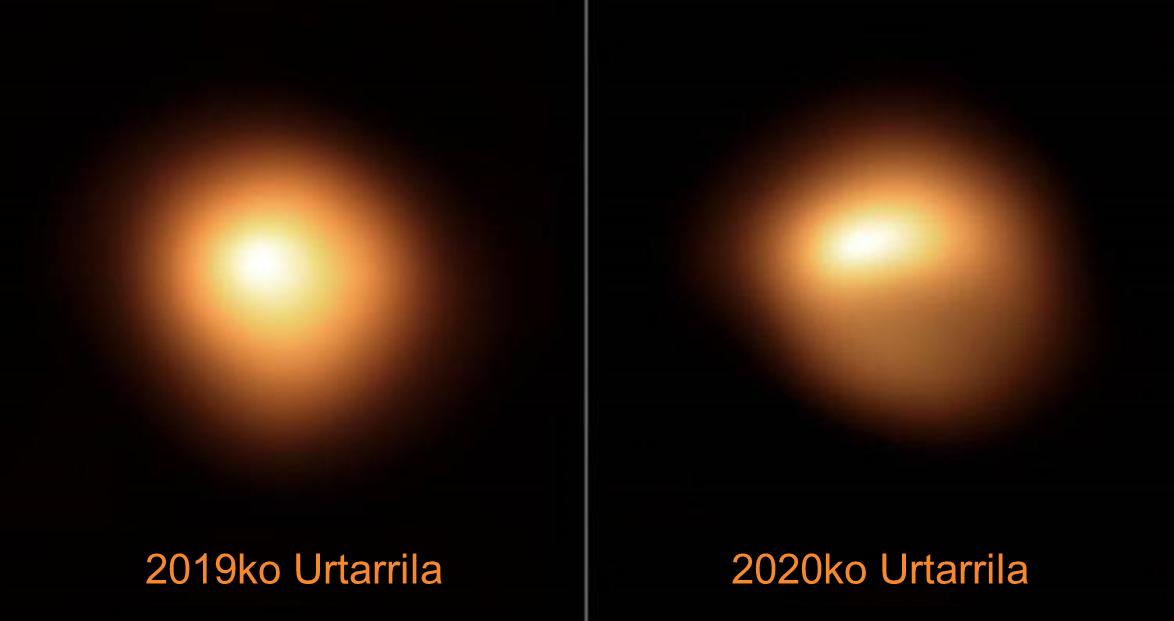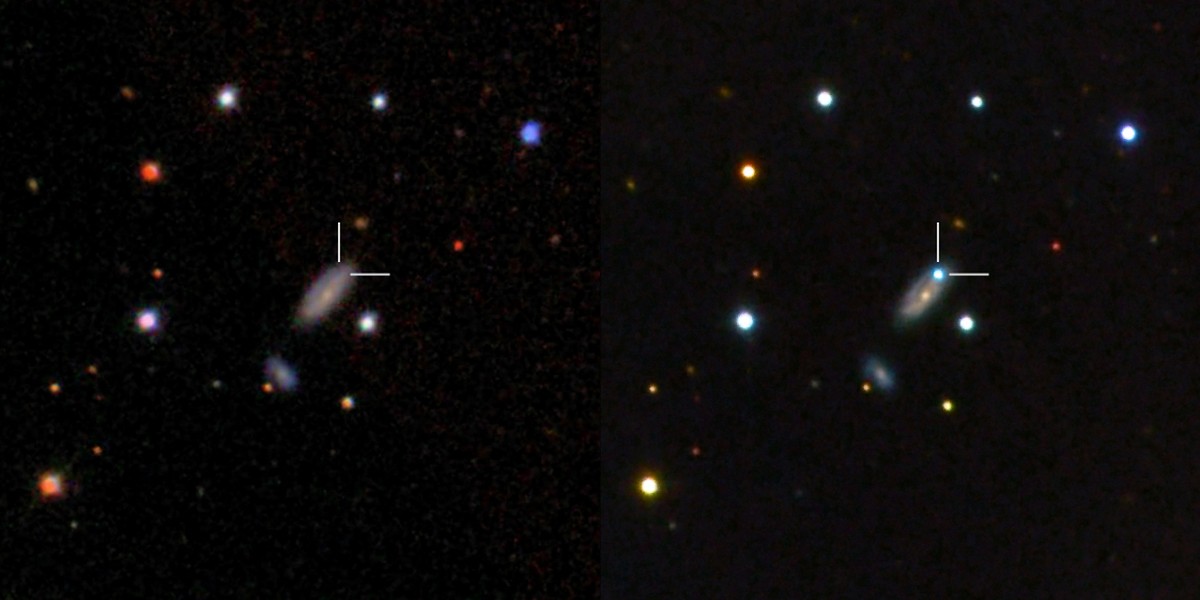Betelgeuse turning off
2020/03/10 Roa Zubia, Guillermo - Elhuyar Zientzia
Something is happening in the stars. Lately, news has been opened, but the important thing is not what has happened, but what can happen. In fact, the news is simple: The star Betelgeuse has lost brightness. Nothing more. But astronomy fans get nervous.

Betelgeuse is the largest and best known star in the constellation of Orion. He should not be an expert in identifying the constellation of Orio. And that's something big. It is the constellation that we see in winter, for example now is a good time. Betelgeuse is a star located at the top left of the constellation. It is the brightest star of the constellation. Not all stars have the same color and Betelgeuse is red.
But this year the above mentioned news has been expanded. Betelgeus has lost brightness. In early 2019 it was the ninth brightest star we had in the sky. Now, on the contrary, it is difficult to overcome the position number one hundred. In a very short time it has lost brightness. And it's the question of all astronomers, what's going on with Betelgeus?
The stars are classified by their size and color, being Betelgeuse a red giant. The color indicates a certain temperature of its surface and, curiously, the blue color is the hottest and the red the coldest. Therefore, red indicates that the temperature to be a star is very low. And being a red giant means the life of Betelgeus is running out. He is dying. Someday it will go out. And there is the question, it will not go out without more. The death of giant stars is very brutal. A star like Betelgeuse we know will explode. It will provoke a supernova, a supernova of type two exactly. When this happens, the light of the explosion will also be seen during the day. This can last for several months.
The question is when that will happen. It can be tomorrow or within two thousand years. We do not know. At the end of the life of a red giant there are many fusion processes: hydrogen fuses to give helium, helium itself merges to give it beryllium, beryllium with helium, carbon formation, etc. Larger atoms are formed. Different processes occur in the different parts of the star. As a consequence of all this, the star expands and compresses, presenting great variations in its brightness. This phase is not usually long in a red giant, but, of course, what is it to be short? Six hundred years? A weekend? You can't know.
That's why astronomy fans are nervous. Tomorrow itself can be a big explosion in the sky. It is not dangerous because Betelgeuse is 600 years of light, and an explosion of a light that is beyond 50 years is not dangerous to us. At first it will be spectacular, but our red giant will disappear.

Gai honi buruzko eduki gehiago
Elhuyarrek garatutako teknologia





